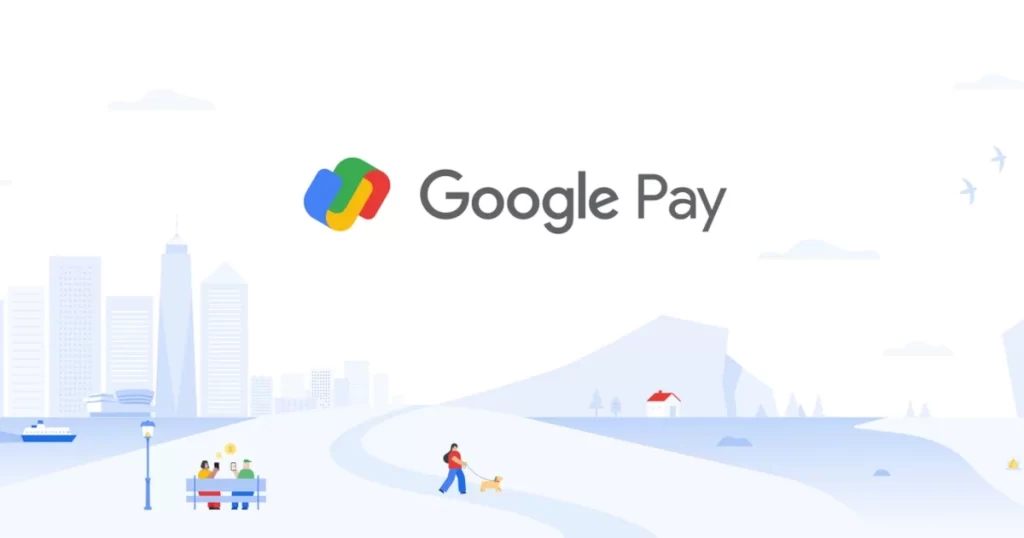Google Pay and the Rise of Mobile Money in India
In the fast-paced evolution of fintech, Google Pay stands out as a transformative force in India’s digital economy. Initially launched as Tez in 2017 and rebranded as Google Pay in 2018, the platform was designed to simplify financial transactions for a country still heavily reliant on cash.
India, with its vast smartphone user base and growing digital infrastructure, was ripe for disruption. Google recognized this opportunity and built a mobile payment solution that was not only simple and secure but deeply integrated with the Unified Payments Interface (UPI)—a government-backed real-time payment system. This strategic alignment enabled Google Pay to reach millions of users and catalyze a shift in how Indians handled money.
Problem Statement – The Need for Google Pay
Before Google Pay entered the scene, India’s digital payments environment was disjointed and underpenetrated. While wallet-based apps existed, they struggled with adoption due to low interoperability, limited trust, and poor user experience.
A few of the major barriers included:
- Heavy reliance on cash transactions, even for daily purchases.
- Low adoption of credit and debit cards, particularly in rural regions.
- Fragmented digital wallet ecosystem, with limited UPI support.
- Concerns around transaction failures, fraud, and lack of customer support.
These issues created a pressing need for a payment system that was fast, reliable, and could reach both urban and rural populations. Google Pay addressed these challenges by offering a secure, easy-to-use digital wallet with UPI integration, eliminating the need for separate wallet top-ups and enabling direct bank-to-bank transfers.
Google Pay’s Launch Strategy and Early Growth
Google Pay’s launch was timed perfectly with the post-demonetization surge in digital payments. Initially introduced as Tez, the app focused on simplicity and instant transfers via UPI, with unique features like audio QR (using ultrasonic sound for proximity payments).
After its rebranding to Google Pay, the platform quickly became synonymous with mobile payments in India. This success was no accident—it stemmed from a sharp understanding of user behavior and local needs.
Key elements of Google Pay’s strategy included:
- Integration with India’s UPI system, allowing zero-fee transactions directly between bank accounts.
- Strategic bank partnerships that facilitated onboarding and credibility.
- A strong brand association with Google, reinforcing user trust.
- Mass-market marketing campaigns with attractive cashback offers and referral incentives that encouraged viral adoption.
Google Pay positioned itself not as a traditional wallet, but as a digital payment gateway embedded directly into users’ bank accounts. This eliminated friction and quickly differentiated it from competitors like Paytm and Mobikwik.
Built for Everyone: Inside Google Pay’s Seamless UX
One of Google Pay’s core strengths is its clean, user-centric design. From the beginning, the app prioritized functionality and speed, helping users make transactions in just a few taps. Its support for regional languages and visual cues made it accessible even to first-time smartphone users.
Key features that defined the user experience:
- UPI-based money transfers using mobile numbers, UPI IDs, or QR codes.
- Bill payments for electricity, water, gas, DTH, and broadband services.
- Mobile and data recharge for all major telecom providers.
- Personalized offers including Google Pay cashback, scratch cards, and limited-time rewards.
- Seamless integration with contact lists, allowing users to find payees effortlessly.
- Strong security protocols such as app lock, biometric authentication, and two-factor verification.
Rather than overwhelming users with features, Google Pay offered a focused, streamlined experience, which is why it consistently ranks high in usability ratings among digital payment apps in India.
Scaling Smart: The Numbers Behind Google Pay’s Dominance
Since its launch, Google Pay has grown from a challenger brand into a powerhouse in India’s digital payments space, consistently ranking among the top UPI apps in terms of transaction volume, value, and user engagement. What started as an experiment with local branding (Tez) quickly evolved into a platform processing billions of transactions monthly.
Explosive Adoption
Google Pay’s adoption curve wasn’t just steep—it was vertical. Within a year of its rebranding in 2018, the app had over 45 million monthly active users. Its seamless user experience, bank-level integration, and reward-driven incentives helped it tap into both urban and rural markets, from college students in Mumbai to vegetable vendors in Varanasi.
As of December 2024, Google Pay’s growth metrics are nothing short of impressive:
| Metric | Value |
|---|---|
| Monthly UPI Transactions | 6.1 billion |
| Total Monthly Transaction Value | ₹8.22 lakh crore |
| Market Share in UPI Payments | 36.7% |
| Active Monthly Users (India) | 67+ million |
Source: NPCI, Dec 2024
These figures show that Google Pay isn’t just a consumer app—it’s a key pillar in India’s national payment infrastructure.
Impact on Financial Behavior
One of Google Pay’s most important contributions lies in behavioral change. It helped normalize digital payments among demographics that were previously resistant to the idea. From auto-rickshaw drivers to elderly pensioners, people who never used net banking or credit cards now use UPI via Google Pay.
Behavioral shifts observed:
- Small-value digital transactions (< ₹100) increased significantly via UPI Lite.
- Over 30% of Google Pay transactions happen in Tier 2 and Tier 3 cities.
- Young users now treat UPI apps like their default wallets—even for splitting dinner bills.
Beyond individuals, small businesses embraced Google Pay at scale. Local stores began printing QR codes, and kirana shopkeepers now prefer GPay over cash for ease of tracking and instant settlement.
Real-World Business Outcomes
For merchants and freelancers, Google Pay has become a revenue enabler. Instant payments, zero transaction fees, and easy bank reconciliation have made it a favorite among:
- Street vendors accepting UPI QR payments without needing a POS terminal.
- Freelancers and service providers collecting payments via UPI links.
- Small business owners managing customer billing with fewer cash dependencies.
Enabler of Government and NGO Payments
Google Pay also enabled smoother disbursement of subsidies, relief funds, and NGO grants—especially during the COVID-19 pandemic. UPI transfers were used to send money directly to beneficiaries, eliminating middlemen and delays.
Google Pay didn’t just capture market share—it transformed digital financial behavior. Its scale and influence have reached beyond metros into the very fabric of India’s daily commerce, pushing the country closer to a truly cashless economy.
Competitive Landscape – Where Google Pay Stands in India’s UPI Race
India’s UPI ecosystem is one of the most competitive digital payments landscapes in the world, with three dominant players Google Pay, PhonePe and Paytm—shaping how millions of Indians transact every day. These apps have not only built massive user bases but also distinct brand identities and strategic advantages.
Google Pay: The User Experience Champion
Google Pay takes a more focused approach—prioritizing simplicity, speed, and trust. Its clean, ad-free interface and direct bank-to-bank payments resonate with users who want a reliable and clutter-free experience. Although it doesn’t offer as many financial products as PhonePe or Paytm, it stands out for its seamless onboarding and intuitive user flow, especially among Android users.
PhonePe: The Full-Service Powerhouse
PhonePe has taken a “super app” approach, offering users a wide variety of services beyond payments—such as insurance, gold investment, mutual funds, and utility services. Its deep integration with merchants and consistent rollout of financial products make it the most diversified platform. This breadth of offering gives it strong stickiness among users, particularly in Tier 2 and Tier 3 cities.
Paytm: From Pioneer to Challenger
Once a market leader, Paytm now plays more of a challenger role in the UPI ecosystem. It offers a comprehensive suite of services—from banking and digital wallets to stock trading and ticket booking—but its UPI share has slipped in recent years. Nonetheless, it remains a strong ecosystem player with a loyal base, especially for users who prefer an all-in-one financial app.
Others: The Niche and Emerging Players
Platforms like BHIM, Amazon Pay, and Cred continue to serve niche segments or act as secondary payment tools. While they currently occupy a smaller slice of the market, their presence contributes to ecosystem diversity, which NPCI actively encourages.
Shifting Regulatory Environment
In response to the market concentration, NPCI has proposed a 30% UPI market share cap, now extended until December 2026. This move is aimed at preventing over-dependence on a few apps and ensuring a healthy competitive landscape. If enforced, it could significantly reshape strategies for the top players.
From Hurdles to Horizons: What’s Next for Google Pay
Google Pay’s growth hasn’t come without challenges. The platform has faced issues like UPI transaction failures, server downtimes, and increasing regulatory scrutiny in India’s fast-changing fintech space.
Key Challenges:
- Intermittent UPI failures leading to user complaints
- Intense competition from well-funded domestic apps
- Compliance with India’s strict data and fintech regulations
Yet, Google Pay continues to adapt and innovate rather than just defend its ground.
Notable Innovations:
- Voice-activated payments via AI assistants for hands-free use
- Tap & Pay with NFC, simplifying in-store purchases
- UPI Lite for fast, low-value transactions without internet
- Credit and BNPL tools in partnership with financial institutions
- Global expansion plans targeting other emerging markets
Google’s roadmap centers on making payments invisible and effortless, blending seamlessly into users’ daily digital routines.
Lessons from a Fintech Powerhouse: The Google Pay Playbook
Google Pay’s journey is a powerful case of how a global tech giant can localize, simplify, and scale digital innovation in an emerging market. By leveraging India’s UPI infrastructure and focusing on a user-first design, Google Pay redefined mobile payments—not through complexity, but through clarity.
Rather than chasing every possible feature, the platform doubled down on core value: fast, secure, and reliable transactions. That decision helped it win user trust, drive habit formation, and cement itself as one of the most preferred digital payment apps in India.
As the UPI ecosystem continues to grow and evolve, Google Pay’s ability to remain lean yet impactful will determine its staying power. With a focus on innovation (like voice and NFC payments), expansion, and ecosystem partnerships, the platform is well-positioned for the next wave of fintech transformation.
Key Takeaways
- Simplicity Wins: Google Pay’s clean interface and no-wallet model lowered the barrier to digital adoption across age groups and regions.
- Local Strategy, Global Trust: By launching as Tez with regional language support and later rebranding under the Google umbrella, the app built trust from both ends—local and global.
- UPI Integration Was Key: Tapping into India’s government-backed UPI system allowed Google Pay to bypass wallet limitations and offer direct, real-time bank transfers.
- Focused Product Beats Super Apps: Unlike competitors chasing multi-service ecosystems, Google Pay stood out by perfecting the payments experience.
- Innovation Keeps It Relevant: Voice payments, UPI Lite, NFC Tap & Pay, and BNPL tools ensure that Google Pay stays ahead in user expectations and technology trends.




